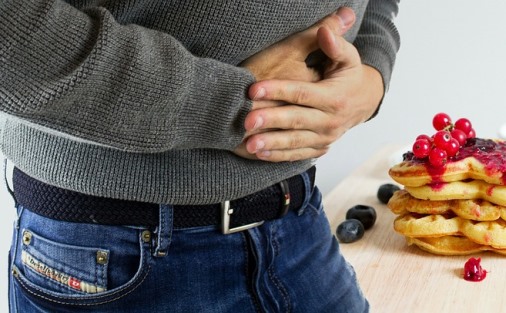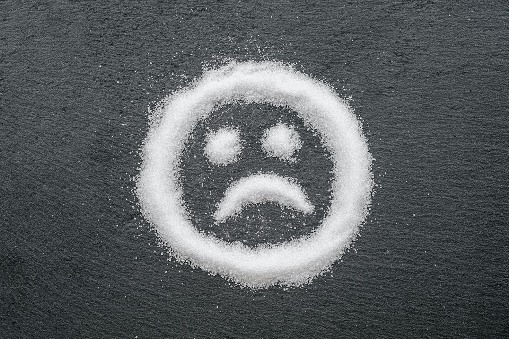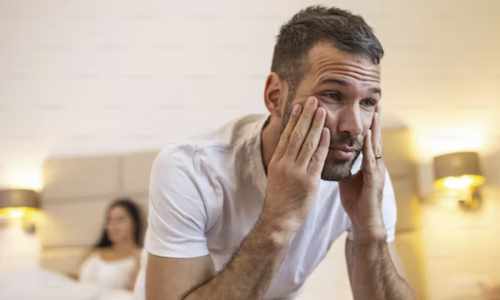OVERVIEW
Joint and muscular pain can significantly impact daily life, limiting mobility and causing discomfort. Dr. Monga’s Clinic offers specialized care for individuals dealing with these issues. This section provides an introduction to the clinic’s approach to joint and muscular pain treatment.
SYMPTOMS
Symptoms of joint and muscular pain can vary depending on the underlying causes and specific conditions. Here are common symptoms associated with joint and muscular pain:
Pain:
Dull, aching pain in the affected joint or muscle.
Sharp or stabbing pain during movement.
Pain that may be constant or intermittent.
Stiffness:
Difficulty moving the joint or muscle freely.
Morning stiffness that improves with movement.
Reduced range of motion.
Swelling:
Visible swelling or puffiness around the joint.
Tenderness to touch.
Increased warmth in the affected area.
Redness:
Inflammation may cause redness around the joint or muscle.
Weakness:
Feeling of weakness in the affected area.
Difficulty in bearing weight or performing routine tasks.
Fatigue:
Generalized fatigue, especially with chronic conditions.
Feeling tired despite adequate rest.
Clicking or
Popping:
Audible sounds like clicking, popping, or cracking during joint movement.
May indicate issues with joint surfaces or ligaments.
Numbness and Tingling:
Sensations of numbness or tingling, often indicating nerve involvement.
Radiating pain from the affected area.
Loss of Function:
Difficulty using the joint or muscle for regular activities.
Impaired ability to grip, lift, or perform specific movements.
Localized or Radiating Pain:
Pain may be localized to a specific joint or muscle group.
Pain may radiate to nearby areas or extend along nerve pathways.
Worsening Pain with Activity:
Pain that intensifies during or after physical activity.
Discomfort that may be alleviated with rest.
Weather Sensitivity:
Some individuals with joint pain may experience increased symptoms in response to changes in weather conditions.
CAUSES OF JOINT PAIN AND MUSCULAR PAIN
The causes of joint and muscular pain are diverse, ranging from acute injuries to chronic conditions. Here are common factors that can contribute to joint and muscular pain:
Injuries:
Sprains and Strains: Overstretching or tearing of ligaments (sprains) or muscles/tendons (strains).
Fractures: Breaks in bones can lead to localized pain and muscle spasms.
Arthritis:
Osteoarthritis: Wear and tear of joint cartilage, common in aging.
Rheumatoid Arthritis: Autoimmune condition causing inflammation and pain in joints.
Gout: Buildup of uric acid crystals in joints, often affecting the big toe.
Overuse and Repetitive Stress:
Repeated movements or excessive stress on a joint or muscle.
Common in occupations or activities that involve repetitive motions.
Inflammatory Conditions:
Tendonitis: Inflammation of tendons.
Bursitis: Inflammation of fluid-filled sacs (bursae) that cushion joints.
Infections:
Viral or bacterial infections affecting joints (e.g., septic arthritis).
Parasitic or fungal infections.
Autoimmune Diseases:
Diseases where the immune system mistakenly attacks the body’s own tissues (e.g., lupus).
Metabolic Disorders:
Gout: Linked to metabolic factors and elevated uric acid levels.
Hypothyroidism: Underactive thyroid can contribute to joint pain.
Neurological Disorders:
Conditions affecting nerves can cause pain, tingling, or weakness in muscles or joints.
Hormonal Changes:
Menopause-related hormonal changes can contribute to joint pain in some individuals.
Genetic Factors:
Some individuals may be predisposed to certain musculoskeletal conditions due to genetic factors.
Lifestyle Factors:
Obesity: Excess weight can strain joints, contributing to pain.
Poor Posture: Incorrect body mechanics may lead to muscle and joint issues.
Dietary Factors:
Nutritional deficiencies, such as low levels of vitamin D or calcium.
Poor diet leading to inflammation and overall musculoskeletal health.
Stress and Mental Health:
Chronic stress can contribute to muscle tension and pain.
Mental health conditions like depression and anxiety may impact the perception of pain.
Medications:
Some medications may have joint pain as a side effect.
Unknown Causes:
In some cases, the exact cause of joint and muscular pain may not be clearly identified.
PREVENTION
Preventing joint and muscular pain involves adopting a holistic approach that addresses various lifestyle factors. Here are some preventive measures to reduce the risk of experiencing joint and muscular pain:
Regular Exercise:
Engage in regular, moderate-intensity exercise to strengthen muscles and maintain joint flexibility.
Include activities that promote cardiovascular health, strength training, and flexibility.
Proper Warm-Up and Stretching:
Always warm up before engaging in physical activity to prepare muscles and joints.
Incorporate stretching exercises to improve flexibility and reduce the risk of injuries.
Maintain a Healthy Weight:
Manage body weight through a balanced diet and regular exercise to reduce stress on joints, particularly in weight-bearing areas like the knees and hips.
Ergonomic Practices:
Maintain proper body mechanics and posture during daily activities.
Use ergonomic furniture and tools to reduce strain on muscles and joints.
Stay Hydrated:
Ensure adequate hydration to support joint lubrication and overall musculoskeletal health.
Balanced Diet:
Consume a well-balanced diet rich in nutrients, including calcium, vitamin D, and omega-3 fatty acids to support bone and joint health.
Protective Gear:
When engaging in activities that pose a risk of injury, use appropriate protective gear such as knee pads, helmets, or supportive footwear.
Avoid Overexertion:
Pace yourself during physical activities to prevent overuse injuries.
Take breaks and listen to your body’s signals.
Proper Footwear:
Wear supportive and comfortable shoes that provide adequate arch support.
Replace worn-out shoes to maintain proper foot alignment.
Regular Health Check-ups:
Schedule regular health check-ups to monitor overall health and address any emerging concerns promptly.
Manage Stress:
Practice stress-reduction techniques such as meditation, deep breathing, or yoga.
Chronic stress can contribute to muscle tension and exacerbate joint pain.
Avoid Smoking:
Quit smoking, as it can negatively impact blood circulation and overall tissue health.
Moderate Alcohol Consumption:
Limit alcohol intake, as excessive alcohol consumption may contribute to inflammation and joint problems.
Bone Health:
Ensure adequate calcium and vitamin D intake to support bone health.
Consider supplements if needed, under the guidance of a healthcare professional.
Listen to Your Body:
Pay attention to early signs of discomfort or pain, and take appropriate measures to address them promptly.
DIAGNOSIS
Diagnosing joint and muscular pain involves a comprehensive evaluation by healthcare professionals to identify the underlying causes. Here are key aspects of the diagnostic process:
Medical History:
A detailed review of the patient’s medical history, including previous injuries, chronic conditions, and family history of musculoskeletal disorders.
Physical Examination:
A thorough physical examination to assess joint function, muscle strength, range of motion, and signs of inflammation or deformity.
Symptom Assessment:
A detailed discussion about the nature and location of pain, its onset, duration, and factors that alleviate or worsen symptoms.
Imaging Studies:
X-rays: To visualize bones and detect fractures, arthritis, or structural abnormalities.
Magnetic Resonance Imaging (MRI): Provides detailed images of soft tissues, ligaments, and tendons.
Computed Tomography (CT) Scan: Useful for detailed imaging of bones and joints.
Blood Tests:
Blood tests to assess inflammatory markers, detect autoimmune conditions, and identify markers of infection.
Joint Aspiration:
Removing a small sample of fluid from the affected joint to analyze for signs of infection, inflammation, or crystal deposits.
Electromyography (EMG) and Nerve Conduction Studies:
Electrophysiological tests to assess nerve function and identify issues related to the peripheral nervous system.
Bone Scans:
Nuclear medicine imaging to detect bone abnormalities, such as fractures or bone infections.
Ultrasound:
Real-time imaging using sound waves to assess soft tissues, joints, and detect inflammation or fluid accumulation.
Clinical Evaluation by Specialists:
Consultation with specialists, such as rheumatologists, orthopedic surgeons, or neurologists, based on the suspected underlying causes.
Diagnostic Injections:
Local anesthetic or anti-inflammatory injections into joints or trigger points to assess if pain relief occurs, helping to pinpoint the source of pain.
Medical Imaging Interpretation:
Interpretation of imaging studies by radiologists to identify abnormalities and correlate findings with clinical symptoms.
Rule Out Differential Diagnoses:
Considering and ruling out other conditions that may mimic joint and muscular pain, such as vascular issues or referred pain from internal organs.
ALLOPATHY APPROACH TOWARDS TREATING JOINT AND MUSCULAR PAIN
The allopathic approach to the treatment of joint and muscular pain involves conventional medical practices, medications, and interventions aimed at alleviating pain, reducing inflammation, and addressing the underlying causes. Here are key components of the allopathic approach:
Pain Medications:
Nonsteroidal Anti-Inflammatory Drugs (NSAIDs): Ibuprofen, naproxen, or COX-2 inhibitors to reduce pain and inflammation.
Analgesics: Acetaminophen for pain relief.
Corticosteroids:
Oral or Injectable Steroids: Prescribed for their powerful anti-inflammatory effects to reduce swelling and pain.
Disease-Modifying Antirheumatic Drugs (DMARDs):
Used in Autoimmune Conditions: Methotrexate, sulfasalazine, or hydroxychloroquine to slow down the progression of diseases like rheumatoid arthritis.
Biologic Response Modifiers:
Targeted Therapies: Monoclonal antibodies or other biologics designed to inhibit specific immune system pathways, often used in autoimmune conditions.
Analgesic Creams and Patches:
Topical Treatments: Creams, gels, or patches containing analgesic or anti-inflammatory agents for localized relief.
Physical Therapy:
Exercise Programs: Prescribed to improve joint flexibility, strengthen muscles, and enhance overall mobility.
Manual Therapy: Hands-on techniques by physical therapists to alleviate pain and improve joint function.
Occupational Therapy:
Assistance with Daily Activities: Techniques and devices to improve independence and reduce joint strain during daily tasks.
Orthopedic Interventions:
Joint Injections: Injections of corticosteroids or hyaluronic acid directly into joints for targeted relief.
Orthopedic Surgeries: In severe cases, surgical procedures such as joint replacement or arthroscopy may be considered.
Bracing and Supports:
Orthotic Devices: Braces, splints, or supports to provide stability and reduce strain on joints.
Lifestyle Modifications:
Weight Management: Guidance on achieving and maintaining a healthy weight to reduce stress on weight-bearing joints.
Adaptive Devices: Recommendations for assistive devices to facilitate daily activities.
Patient Education:
Understanding the Condition: Providing information on the nature of the condition, treatment options, and self-management strategies.
Monitoring and Adjusting Treatment:
Regular Follow-ups: Monitoring the patient’s response to treatment and adjusting medications or interventions as needed.
AYURVEDA APPROACH
The Ayurvedic approach to the treatment of joint and muscular pain is rooted in the ancient Indian system of medicine, focusing on restoring balance to the body, mind, and spirit. Here are key components of the Ayurvedic approach:
Dosha Assessment:
Individual Constitution (Prakriti): Determining the patient’s unique dosha (Vata, Pitta, or Kapha) to tailor treatments based on their constitutional balance.
Herbal Remedies:
Anti-Inflammatory Herbs: Utilizing herbs with anti-inflammatory properties, such as Turmeric (Curcumin), Ashwagandha, Guggulu, and Boswellia.
Analgesic Herbs: Using pain-relieving herbs like Shallaki (Boswellia serrata), Nirgundi (Vitex negundo), and Guduchi (Tinospora cordifolia).
Ayurvedic Oils and Massage:
Snehana (Oil Massage): Application of herbal oils through massage to nourish joints, reduce inflammation, and improve circulation.
Pinda Sweda (Herbal Bolus Massage): Warm herbal poultices applied to affected areas to alleviate pain and stiffness.
Dietary Recommendations:
Balancing Doshas through Diet: Customizing a diet based on the patient’s dosha to maintain balance and prevent aggravation.
Inclusion of Specific Foods: Emphasizing foods with anti-inflammatory properties and avoiding those that may exacerbate inflammation.
Panchakarma Therapy:
Virechana (Purgation): Detoxification to eliminate toxins and balance doshas.
Basti (Enema Therapy): Administration of herbal enemas for cleansing and nourishing the colon.
Abhyanga (Oil Massage): Full-body massage with herbal oils to promote relaxation and balance doshas.
Yoga and Pranayama:
Gentle Yoga Asanas: Tailored yoga poses to improve joint flexibility and strengthen muscles.
Pranayama (Breathing Exercises): Breathing techniques to enhance overall well-being and reduce stress.
Lifestyle Modifications:
Dinacharya (Daily Routine): Guidance on daily practices to align with natural rhythms and support doshic balance.
Ritucharya (Seasonal Routine): Adapting lifestyle choices according to the seasons.
Mind-Body Practices:
Meditation and Mindfulness: Techniques to calm the mind, reduce stress, and enhance overall mental well-being.
Ayurvedic Formulations:
Tailored Herbal Formulas: Combining herbs based on the individual’s constitution and the specific imbalances causing joint and muscular pain.
Personalized Ayurvedic Consultation:
Individualized Treatment Plans: Developing a personalized plan based on the patient’s unique constitution, imbalances, and the nature of the condition.
Continued Monitoring:
Regular Follow-ups: Monitoring progress, adjusting treatment plans as needed, and providing ongoing support.
ROLE OF PANCHKARMA
Panchkarma is designed to balance the doshas (Vata, Pitta, and Kapha), eliminate toxins (ama), and promote overall well-being. Here’s how Panchkarma contributes to the treatment of joint and muscular pain:
Virechana (Purgation):
Purpose: To eliminate excess Pitta and toxins from the body.
Benefits: Reduces inflammation, detoxifies the liver, and supports digestion, addressing imbalances contributing to joint pain.
Basti (Enema Therapy):
Purpose: Cleansing and nourishing the colon, balancing Vata dosha.
Benefits: Alleviates constipation, improves digestion, and supports the health of the lower back and pelvic region, which can affect joint health.
Abhyanga (Oil Massage):
Purpose: To lubricate joints, enhance circulation, and balance Vata dosha.
Benefits: Nourishes the tissues, reduces stiffness, and promotes relaxation, contributing to joint pain relief.
Swedana (Steam Therapy):
Purpose: To induce sweating and eliminate toxins through the skin.
Benefits: Improves circulation, reduces stiffness, and enhances the effectiveness of subsequent therapies.
Nasya (Nasal Administration):
Purpose: To cleanse and balance the nasal passages, especially in cases of Vata imbalance affecting the head and neck.
Benefits: Relieves congestion, enhances mental clarity, and addresses issues related to the head and neck, which may contribute to headaches or neck pain.
Raktamokshana (Bloodletting):
Purpose: To purify the blood and remove toxins.
Benefits: Reduces inflammation, supports the elimination of impurities from the blood, and may benefit conditions with a strong Pitta component.
Shirodhara (Oil Pouring on the Forehead):
Purpose: To calm the mind, balance Vata, and promote relaxation.
Benefits: Reduces stress, anxiety, and mental tension, which can have a positive impact on musculoskeletal health.
Pinda Sweda (Herbal Bolus Massage):
Purpose: To provide localized heat and nourishment to specific areas of the body.
Benefits: Alleviates pain, reduces stiffness, and enhances joint mobility through the application of warm herbal poultices.
Udvartana (Herbal Powder Massage):
Purpose: To exfoliate the skin, stimulate circulation, and balance Kapha dosha.
Benefits: Enhances blood flow, reduces excess Kapha, and promotes overall vitality.
Gandusha and Kavala (Oral Care):
Purpose: To maintain oral health and balance doshas in the head and neck region.
Benefits: Supports oral hygiene, addresses conditions affecting the mouth and throat, and indirectly contributes to overall well-being.
TREATMENT AT DR MONGA MEDI CLINIC
At Dr. Monga Clinic, we specialize in integrated pain management, combining the strengths of allopathy, Ayurveda, and Panchkarma. Our team of experienced healthcare professionals tailors treatment plans to the individual needs of each patient, providing a personalized and effective approach to joint and muscular pain.
The integrated approach to joint and muscular pain at Dr. Monga Clinic offers a holistic and patient-centered solution. By combining the best of allopathy, Ayurveda, and Panchkarma, we aim to provide effective and sustainable relief for individuals seeking comprehensive care for their pain.
FREQUENTLY ASKED QUESTIONS
The timeline for improvement varies based on individual factors and the severity of the condition. Some may experience relief sooner, while others may require more time for a noticeable change.
When done under the supervision of qualified healthcare professionals, the integration of allopathy and Ayurveda is generally safe. It’s essential to communicate openly about all treatments and medications being used to ensure compatibility.
Panchkarma procedures are best conducted under the guidance of trained practitioners in a clinic setting. Attempting these therapies at home without proper knowledge and supervision may not yield the desired results and could pose risks.














